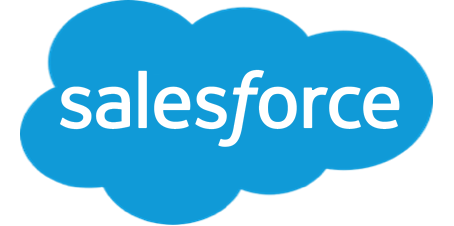How Salesforce Is Driving a Net Zero Future With Technology

Concordia Research Station on the Antarctica Plateau is considered to be the coldest place on Earth. So, when the temperature hit -11.5-degrees Celsius in March—the typical high is a cool -49 —it set a new world record for the largest temperature excess above normal. Needless to say, scientists sounded the alarm.
This polar heatwave is just the latest sign of a planet in peril. According to Salesforce’s 2021 Climate Action Plan, “The amount of greenhouse gasses in the atmosphere is the most urgent issue facing humanity today.”
The global enterprise is widely known for its customer relationship management (CRM) software, but Salesforce has gained international recognition as a company that stands for more. Its co-founder and co-CEO, Marc Benioff, is often quoted saying “the business of business is to improve the state of the world.” For years, the company has lived this mantra by leading with four values – trust, customer success, innovation, and equality for every human being. In February 2022, Salesforce announced sustainability as its fifth value, making it a core operational focus of the business.
This move crystalizes the sustainability journey that the company has been on for the last decade. In 2013 they made a commitment to reach 100 per cent renewable energy, and in 2021, Salesforce announced that it had reached net zero emissions across its full value chain and achieved 100 per cent renewable energy for its global operations.
For Salesforce, values aren’t lip service. They are fundamental to how the business is run and how they serve not just shareholders, but all stakeholders–including the planet.
“Climate change impacts every individual, company, city, and nation, and it disproportionately affects the poorest and most vulnerable, amplifying global inequality,” said Patrick Flynn, senior vice president, global head of sustainability at Salesforce. From wildfires to droughts, the effects of climate change are becoming harder to ignore.
Once seen as a niche way to increase brand appeal for eco-minded consumers, sustainable corporate practices are going mainstream as many Canadians express a new sense of urgency. According to a recent survey from Salesforce, 60 per cent believe companies have the greatest responsibility to address climate change. Social responsibility is driving purchase decisions too: nearly 70 per cent of consumers say they would buy less or stop buying altogether from companies that aren’t transparent in their values.
An Actionable Plan
Bold action is the only way forward. Scientists are adamant that we must cut global emissions in half over the next eight years, and collectively achieve net zero by 2050. With Canada’s ambitious Emissions Reduction Plan announced by the Federal Government in March, the clock is ticking for businesses to get on board.
For leaders that don’t know where to start, they might look to Salesforce’s 2021 Climate Action Plan. It consists of six focus areas, ranging from emissions reduction and carbon removal to innovation and education, and is now serving as a blueprint for others.
One of those priorities is tree ecosystem restoration. Salesforce partnered with the World Economic Forum to found 1t.org, a global movement to conserve, restore and grow one trillion trees by 2030. The company also made its own commitment to contribute 100 million trees to this global effort by the end of the decade in partnership with organizations like One Tree Planted. Just last year they worked with the non-profit to grow and conserve 500,000 native trees in the fire-ravaged Nazko First Nation Territory in B.C.’s Fraser Plateau, and have more Canadian projects on the way.
Under this partnership, Salesforce is powering global reforestation efforts for One Tree Planted with vital technology. The platform solution enables them to plan, implement, and monitor planting projects worldwide—part of the platform Salesforce is using to achieve its own emissions reductions goals.
A Technology Blueprint for Success
Technology has played a key role in Salesforce’s own sustainability journey. It initially created Net Zero Cloud as a solution to internally track and analyze carbon emissions in a range of operational areas, from energy usage to business travel. In 2019, it began offering the technology solution to customers and partners.
“When we add a value we operationalize it in every area of the business,” said Suzanne DiBianca, chief impact officer & EVP of corporate relations, Salesforce. “In this climate emergency, we need every organization to get to net zero as fast as possible. Now that Salesforce has reached net zero emissions, we want to use our technology and best practices to help organizations reach their climate goals, too.”
TELUS, Canada’s leading wireless provider, was the first Canadian customer to implement Net Zero Cloud in support of its own journey to carbon neutrality by 2030. The technology helps the company track emissions across its 4,000-plus building facilities and streamline the onerous work of executing on its planned energy-saving projects. It also helps them accelerate additional initiatives such as lighting retrofits and water conservation.
As reporting grows increasingly complex and detailed, companies need to find accurate, real-time, automated systems to manage the data and calculate science-based targets to guide their path to net zero.
“Net Zero Cloud has helped reduce the number of discrepancies in our sustainability calculations,” said TELUS senior sustainability strategy manager, Terry Hickey. “The math is simple, but with so many inputs, there’s so much room for human error. Net Zero Cloud offers a consistent approach and calculation for everything, so we know we’re accurate and transparent with our stakeholders. We’re also able to plan and execute on our climate action goals much more effectively.”
Driving meaningful climate action at scale is at the heart of Salesforce’s mission today – and that extends well beyond its own operations. From working with suppliers and organizations across industries, to putting technology in the hands of businesses like TELUS to accelerate their sustainability journey, the message is clear: businesses of any size can be powerful platforms for change. The time is now; we don’t have a second to waste.
To learn more about how you can accelerate your path to net zero, click here.
